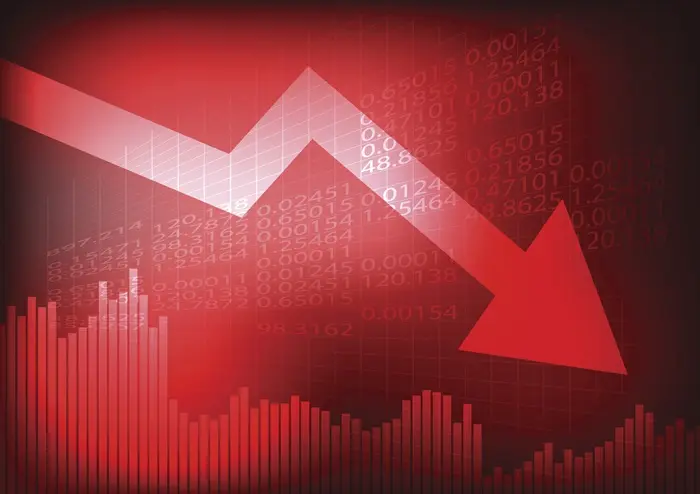Earnings Per Share (EPS) is one of the most critical financial metrics used by investors to evaluate a company’s profitability. Whether you are a seasoned investor or new to the world of stocks, understanding EPS is essential for making informed investment decisions. In this article, we will explain what EPS is, how it is calculated, what constitutes a “good” EPS, and how to interpret it when evaluating stocks.
Understanding EPS: What Is It?
Definition of EPS
Earnings Per Share (EPS) refers to the portion of a company’s profit allocated to each outstanding share of common stock. In simpler terms, it shows how much money a company makes for each share of stock, and it’s a key indicator of a company’s profitability. EPS is widely used by analysts, investors, and financial experts to assess a company’s performance and compare it to other companies in the same industry or sector.
The formula to calculate EPS is:
EPS = (Net Income – Dividends on Preferred Stock) / Outstanding Shares
Where:
Net Income: The total earnings of the company after all expenses, taxes, and interest have been deducted.
Preferred Dividends: Dividends paid to preferred stockholders (if applicable).
Outstanding Shares: The number of shares that are available for trading in the market.
Types of EPS
There are different variations of EPS, each serving a different purpose in financial analysis. These include:
Basic EPS: The simplest form of EPS, calculated using the formula mentioned above. Basic EPS includes only the common stock in circulation.
Diluted EPS: This version accounts for the potential dilution of shares, such as stock options, convertible securities, or warrants that could increase the number of shares in circulation. Diluted EPS is typically lower than basic EPS, as it assumes that more shares are outstanding.
Adjusted EPS: Some companies adjust EPS to exclude non-recurring items, such as one-time gains or losses, restructuring charges, or changes in accounting principles. Adjusted EPS provides a clearer picture of a company’s ongoing profitability.
Understanding the differences between these types of EPS can help you make better decisions when comparing companies or evaluating their financial health.
What Does EPS Tell You?
EPS is a critical measure of a company’s ability to generate profits. It tells investors how much profit a company is earning for each share of stock, which is important for several reasons:
Indicator of Profitability
A higher EPS indicates that a company is making more profit per share, which is generally considered a sign of financial strength. Conversely, a low or negative EPS suggests that the company may be struggling to generate profits.
Basis for Valuation
EPS is often used as a basis for valuation ratios like the Price-to-Earnings (P/E) ratio. The P/E ratio compares the price of a company’s stock to its earnings per share, helping investors determine if the stock is overvalued or undervalued.
Performance Over Time
Investors often look at a company’s EPS over multiple periods to gauge its profitability trends. If a company consistently grows its EPS, it can signal a healthy and expanding business. On the other hand, a declining EPS over time could indicate financial difficulties or operational challenges.
Comparison with Peers
EPS allows investors to compare companies within the same industry or sector. By comparing the EPS of companies in similar lines of business, investors can assess which companies are more profitable and thus potentially offer better investment opportunities.
How to Interpret EPS in Stocks
High EPS vs. Low EPS
When evaluating stocks, the general rule is that a higher EPS is better, as it suggests a company is generating more profits per share. However, simply looking for stocks with the highest EPS might not always lead to the best investment decisions. Several factors need to be considered when interpreting EPS:
A Good EPS Depends on Industry
EPS varies significantly between industries. For example, technology companies often have high EPS compared to retail businesses due to their higher profit margins and lower operational costs. Therefore, a good EPS for a tech company might be significantly higher than a good EPS for a manufacturing firm.
Investors should compare EPS figures of companies within the same industry to ensure that they are making an apples-to-apples comparison.
EPS Growth Over Time
A company’s ability to consistently grow its EPS is more important than the absolute value of the EPS. EPS growth over time is a sign of strong business performance and the ability to generate more profit as the company expands. Therefore, investors should look for companies that show a consistent upward trend in EPS over several quarters or years.
Consider Diluted EPS
When evaluating a company’s EPS, it is essential to look at both the basic and diluted EPS. Diluted EPS accounts for potential stock dilutions, and a significant difference between basic and diluted EPS may indicate that the company’s earnings are being spread across a larger number of shares. This could result in a lower EPS when the company issues more shares or grants stock options to employees.
EPS in Context: The P/E Ratio
One of the most common ways to use EPS is in the calculation of the Price-to-Earnings (P/E) ratio, which is another critical metric for stock valuation. The P/E ratio compares the price of a company’s stock to its earnings per share and helps investors determine whether the stock is overvalued or undervalued.
The formula for calculating the P/E ratio is:
P/E Ratio = Market Price per Share / EPS
How to Use the P/E Ratio
Low P/E Ratio: A low P/E ratio could mean that the stock is undervalued, or it could indicate that the company is facing challenges or is in a declining industry.
High P/E Ratio: A high P/E ratio might suggest that the stock is overvalued, or it could indicate that investors have high growth expectations for the company. A high P/E ratio is often seen in fast-growing sectors like technology or healthcare.
It is essential to look at the P/E ratio in conjunction with EPS growth to make a well-rounded assessment of a company’s financial health and stock price.
Understanding EPS in the Context of the Broader Market
While EPS is a valuable tool for assessing individual companies, it should not be used in isolation. Investors should consider other financial metrics, such as revenue growth, profit margins, and free cash flow, to get a fuller picture of a company’s financial performance. Moreover, market conditions and economic factors can impact a company’s profitability, and investors should stay informed about broader market trends when evaluating EPS.
What Constitutes a “Good” EPS?
A High EPS
Generally, a high EPS indicates that a company is making significant profits. However, determining what constitutes a “good” EPS depends on several factors, including industry benchmarks, historical performance, and the company’s growth potential. A good EPS for a large, established company might be higher than for a newer, smaller business. Additionally, an investor should consider the sustainability of the company’s earnings. A company with a strong history of growing its EPS is often more attractive than one with a high but unstable EPS.
Consistent EPS Growth
While a high EPS can be a good sign, it is essential to focus on consistency and growth. A company that consistently grows its EPS year-over-year or quarter-over-quarter is often a sign of a strong and well-managed business. Investors should pay attention to whether a company is on a long-term upward trajectory, as this shows that it is increasing profitability and efficiently managing costs.
Positive vs. Negative EPS
A negative EPS indicates that a company is losing money, which is a red flag for potential investors. However, in some cases, a negative EPS might be temporary, such as during periods of heavy investment or expansion. On the other hand, a positive EPS is usually a sign of a healthy business, and a higher EPS typically reflects better profitability.
EPS and Market Sentiment
In the stock market, sentiment plays a significant role in how EPS is perceived. Even if a company has strong EPS figures, the market’s reaction might be influenced by broader economic conditions, investor sentiment, or changes in industry trends. For example, a company’s stock price might decline even with solid EPS growth if there are concerns about the company’s long-term prospects or industry challenges.
Limitations of EPS
While EPS is a useful indicator of a company’s profitability, it has some limitations that investors should be aware of:
One-Time Events: EPS can be affected by one-time events like asset sales or write-offs, which can skew the number and make it difficult to compare over time.
Accounting Methods: Different companies may use different accounting practices, which can affect how EPS is calculated. This is particularly true for companies with complex financial structures or multiple subsidiaries.
Does Not Reflect Cash Flow: EPS is based on net income, which includes non-cash expenses like depreciation and amortization. It doesn’t reflect a company’s ability to generate cash, which can be an important consideration for investors.
Conclusion
In conclusion, Earnings Per Share (EPS) is a crucial metric that investors use to assess a company’s profitability and compare it to others in the same industry. A “good” EPS depends on various factors such as industry standards, historical performance, and growth potential. Investors should consider EPS in the context of other financial metrics and trends to make well-informed investment decisions. A consistently growing EPS is typically a sign of a healthy and thriving business, while a declining EPS could signal problems or challenges ahead. Always remember to look at EPS in combination with other financial data to get a comprehensive picture of a company’s financial health.
Related topics:


































